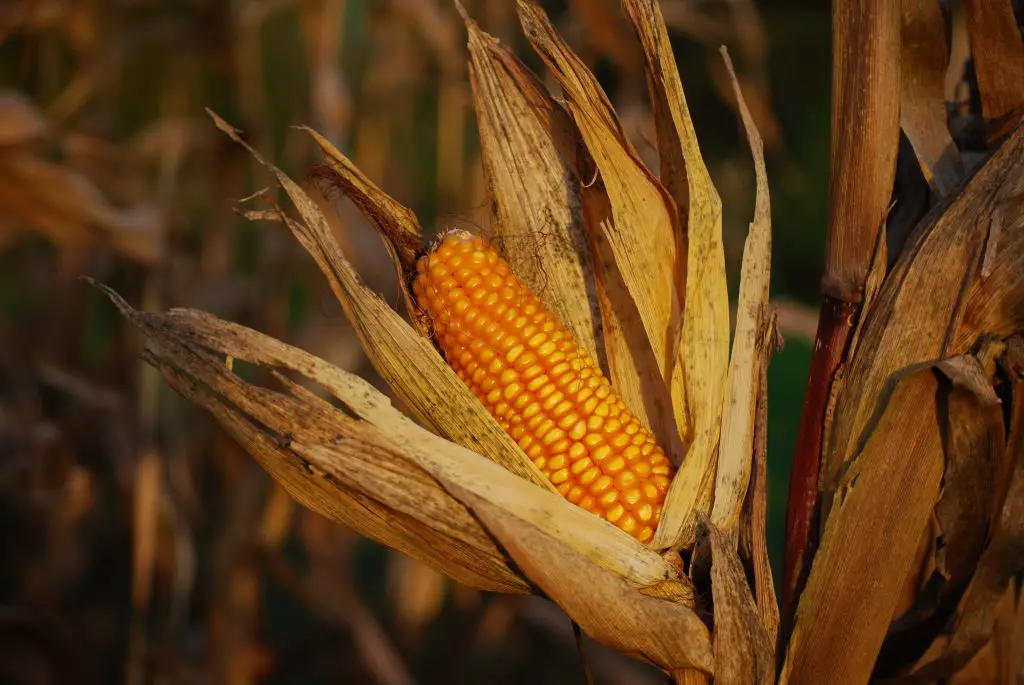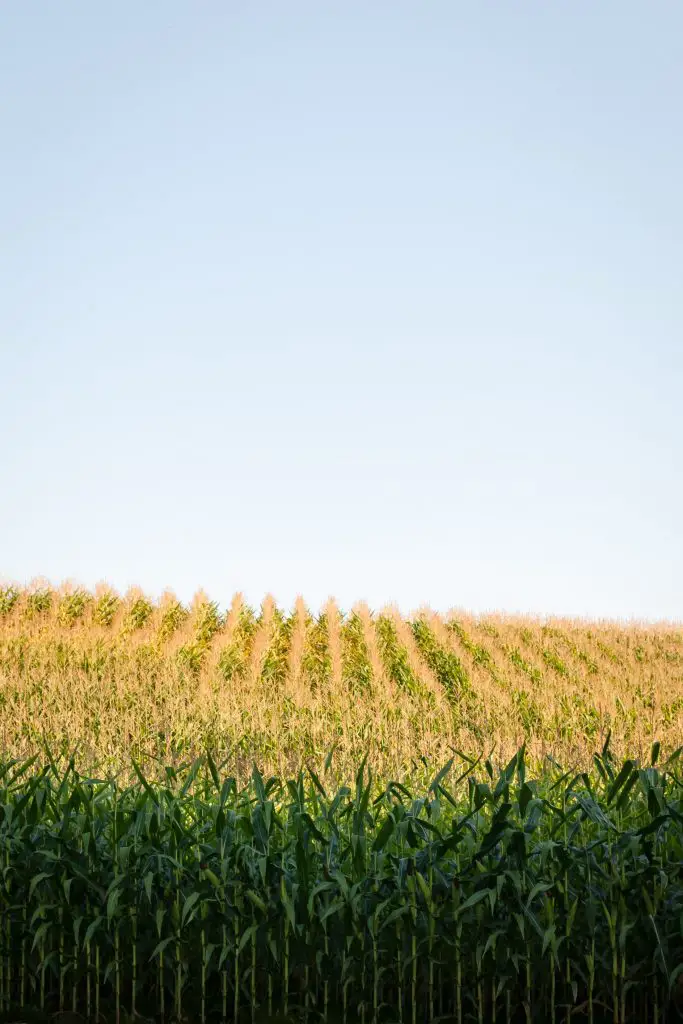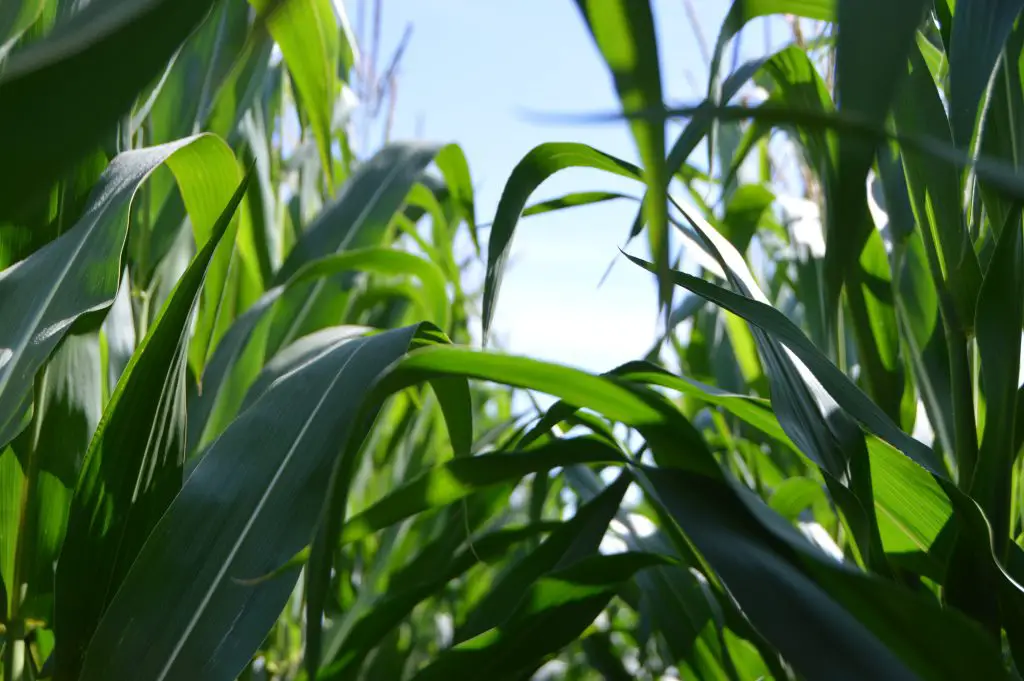When Do You Pick Corn? What happens If You Pick Corn Too Early? Corn is one of the best crops to grow in the backyard because you cannot beat the flavor from home-grown vegetables for one simple reason, as soon as the corn is picked the sugars begin to convert to starch. However, for home gardeners, it can be a little bit challenging to harvest the corn at the right time of the year to ensure you maximize the flavor. What happens if you pick the corn too early?
Corn does not ripen after it is picked so if it is picked too early it will remain relatively flavorless until the sugars fully develop in the kernels. The easiest way to determine if the corn is ready to pick is to test the kernels by piercing them with your nail which will produce a white fluid if they are ripe.
However, even before you do this test there are a couple of signs to look for to give you an indication that it is even worth testing the kernel in the first place. The most obvious one is that the ear of corn will produce white spindly threads at the top of the ear. These threads need to turn brown before it is even worth testing the kernel at all.
To avoid damaging the ears of corn it is best to only test one ear. To do the test peel back the outer sheet of the corn to reveal the cob and then pierce one of the kernels with your thumbnails to release the liquid inside. If the liquid is still clear simply wrap up the cob of corn and leave it for a week or so before testing the same ear of corn to see if it is ready.
As corn does not remain ripe for very long it is important to harvest them within a week or two of the test to ensure that the kernels do not become tough and start to dry out.

How To Extend The Harvest Period Of Corn
As corn has a relatively short harvest period the obvious question is how do you extend this time to maximize the period over which the vegetable is available. There is generally very little that you can do two extend the harvest period of an individual crop of corn, however, it is possible to have corn available in your garden for several months if you extend the period over which you plant seeds.
It is best to plant your first seeds around 4 to 6 weeks before the last frost of the season. Using seed trays that are ideally heated to ensure that the plant gets off to the best possible start is recommended. This is particularly important if you live in a relatively cool climate where the temperature indoors varies significantly throughout the day.
To overcome this issue we highly recommend that you purchase a heated seed propagation tray as they are relatively cheap and make it much easier to control the growing conditions in the early part of the season. If you are considering purchasing one, the product we would recommend is the ipower germination kit which is available on Amazon.
The reason we select this particular product is that it has a removable seed tray and a humidity dome which will help to maintain the climatic conditions for the seedlings. The removable seed tray is advantageous because it is usually the part of the unit that deteriorates first so being able to remove it and therefore replace it will extend the life of the unit significantly. To see the latest price on Amazon click on the link below.
Once the seedlings for the first batch have been planted it is advisable to plant another batch of corn approximately 4 weeks apart up until the middle of summer. Sowing at these intervals will mean that you should have a crop available every 4 weeks or so throughout the season should allow you to have corn for an extended period of time from early summer through to autumn.
However, as you have several lots of corn available at the time it can take quite a bit of space up in the yard which cannot be used for other crops. The solution to this is to plant corn with other crops which will help you to maximize the output of your garden.

One of the most well-known combinations is called the three sisters’ which is a combination of pumpkin, corn, and beans which provides an advantage for all three crops with the beans being able to climb up the corn while the pumpkin acts as a ground cover preventing moisture loss and the beans provide additional nitrogen for all the crops.
Variations on this can include growing watermelon, cantaloupe, or even cucumbers instead of pumpkins along the ground along with any other types of climbing vegetables that could potentially replace the beans in this combination.
What To Do With Corn Cobs That Have Become Tough
Once you have picked your ripened corn cobs there will be at least a few of the ears within your crop that have been on the plant for too long and have come tough and inedible. So what can you do with these ears? The most obvious solution is to simply place them in the compost and start again, however, if you do select varieties to grow that are open-pollinated these is can be valuable sources of seed for the following year as the seeds can be collected easily.
To collect the seeds simply put the corn cobs aside somewhere in a dry location and allow them to dry out. The kernels can be snapped off the corn when it is completely dry allowing you to collect the seeds.
However, it is important to note that the vast majority of corn seed that is sold are hybrid varieties that cannot be collected because they will not grow true to type in the following season. The reason for this is that they are genetically unstable cross which is subject to further cross-pollination in subsequent years which will affect the quality of the corn.

If you’re unsure whether the seeds you are using are hybrid seeds look at the name on the seed packet it will either have something like hybrid in the name or F1, both of which are indicators that the seeds are a hybrid. If you want to get open-pollinated seed we would highly recommend that you visit seeds now who specialize in selling heirloom variety seeds and are among the lowest cost providers on the market. To see what they have an offer click on the link below.
I hope you found this article useful and have great success with your corn if you have any questions please leave them in the section below.
Relevant Articles
Can You Save Corn Seeds For Next Year?
Is It Too Late To Plant Sweet Corn?
Can You Harvest Corn More Than Once In A Season?
Is Corn Annual Or Perennial? Do I Need To Plant It Every Year?


